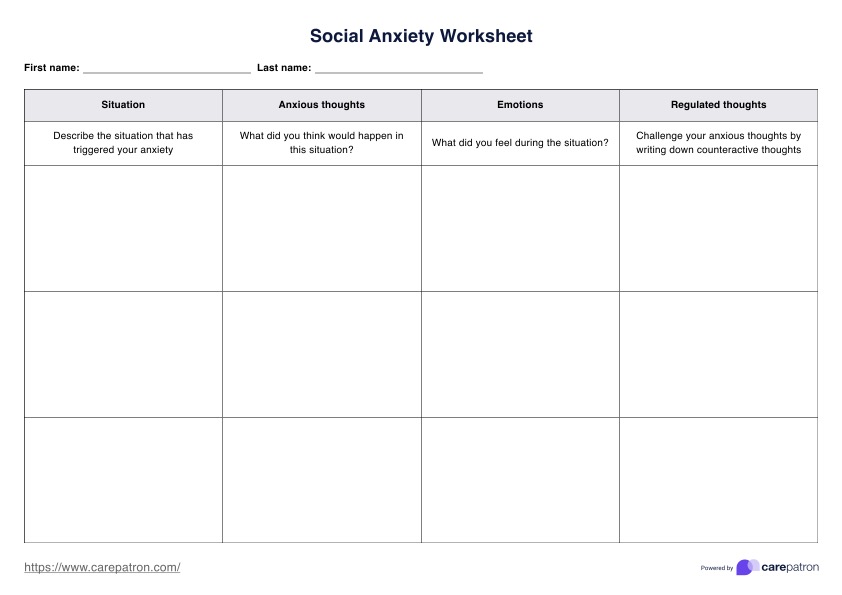The most appropriate time to use this worksheet is when you are treating a patient who is experiencing social anxiety. Even if this is not the primary reason behind their seeking treatment, you will still find that utilizing the worksheet has benefits for patients. During one of your sessions, you should introduce the worksheet to your patient and encourage them to complete it on their own time.

Social Anxiety Worksheets
A well-designed social anxiety worksheet to use at your practice today. With this resource, you can engage patients in their care, develop informed treatment plans, and achieve better outcomes.
Social Anxiety Worksheets Template
Commonly asked questions
As we mentioned, these documents contain confidential information and need to be stored securely. Although this can include using a physical storage place, like a locked filing cabinet, we recommend storing them electronically. Using healthcare software will ensure that your documents are securely stored and easily accessible should you want to retrieve them.
The answer to this depends entirely on the patient and the treatment plan's effectiveness. If you believe the Social Anxiety Worksheet isn’t working as effectively as it once was, then it may be time to switch up your strategies. On the other hand, if the worksheet continues to lead to better results (for both you and your patient), you’ll likely want to continue using it.
EHR and practice management software
Get started for free
*No credit card required
Free
$0/usd
Unlimited clients
Telehealth
1GB of storage
Client portal text
Automated billing and online payments











